Fidel Castro: Immortalised in photographs
When Castro arrived on the world stage in the 1950s, he quickly utilised the power of photography to seduce the masses

Your support helps us to tell the story
From reproductive rights to climate change to Big Tech, The Independent is on the ground when the story is developing. Whether it's investigating the financials of Elon Musk's pro-Trump PAC or producing our latest documentary, 'The A Word', which shines a light on the American women fighting for reproductive rights, we know how important it is to parse out the facts from the messaging.
At such a critical moment in US history, we need reporters on the ground. Your donation allows us to keep sending journalists to speak to both sides of the story.
The Independent is trusted by Americans across the entire political spectrum. And unlike many other quality news outlets, we choose not to lock Americans out of our reporting and analysis with paywalls. We believe quality journalism should be available to everyone, paid for by those who can afford it.
Your support makes all the difference.On the eve of Fidel Castro’s funeral, the current president of Cuba Raúl Castro announced that his older brother’s name and likeness “would never be used on institutions, streets, parks or other public sites, and that busts, statues or other forms of tribute would never be erected” in order to prevent a cult of personality, or “culto a la personalidad”.
But the state nonetheless carefully chose an image suitable for Castro’s memorialisation: a photograph of him posing triumphantly in military fatigues with a backpack and rifle at the top of Pico Turquino, the highest point in Cuba. It was taken in June 1961 in the Sierra Maestra, where the rebel leader and his army fought a guerrilla war between 1956 and 1958.
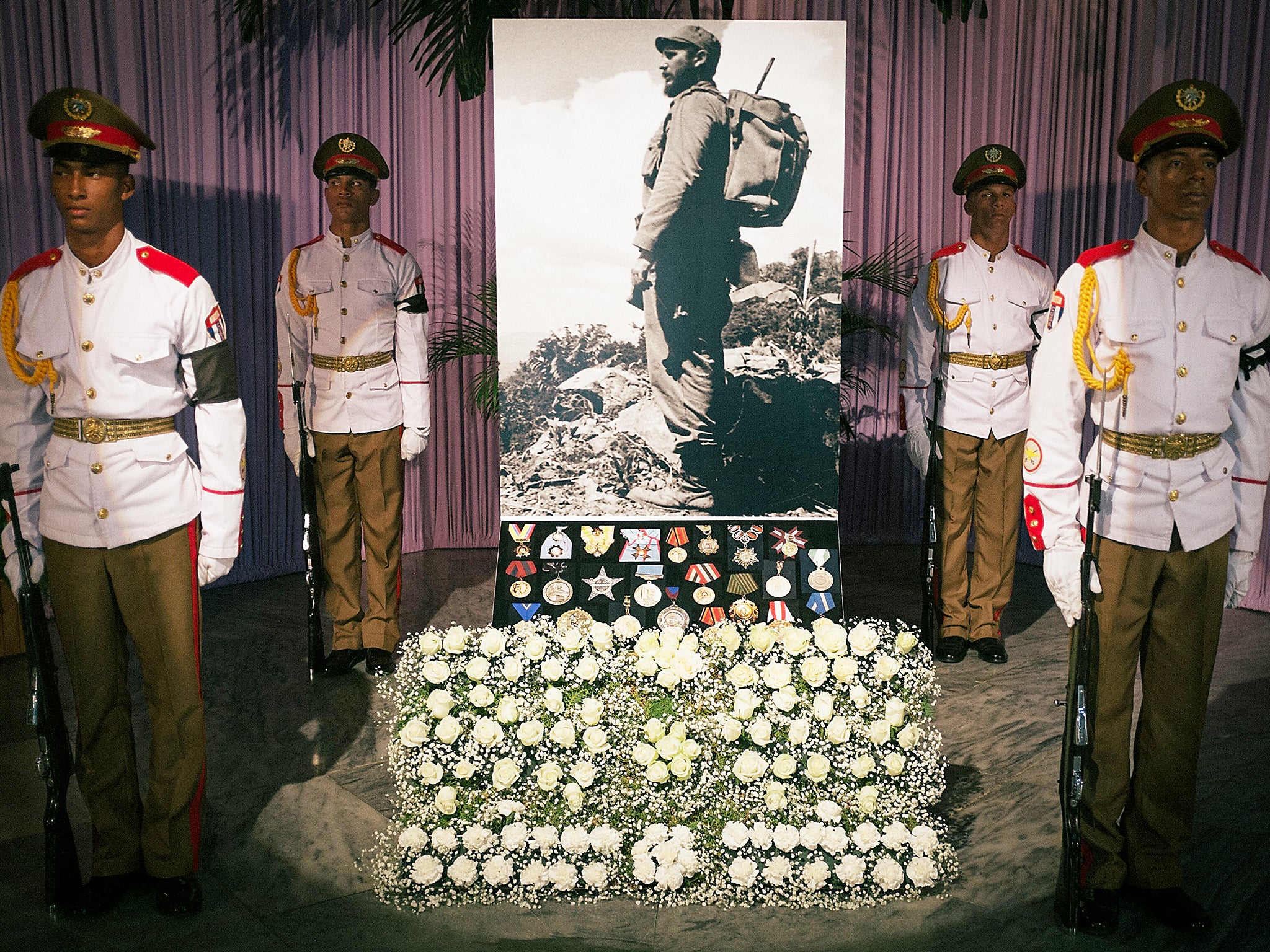
The picture adorned the facade of the National Library Jose Marti, was displayed at the memorial itself in the Plaza de la Revolución (Revolution Square) in Havana, and was later supplied in prints at the mass rallies held in Havana and Santiago de Cuba. In the nine days following Castro’s death, millions of copies of this and other photographs festooned the entire country.
Hundreds of thousands of Cubans attended mass eulogies and vigils in Havana and Santiago; many more lined the central highway and towns and cities on the route as his funeral cortege travelled the length of the country. This was a symbolic reversal of the rebel army’s victory caravan following the triumph of the Cuban Revolution in 1959. The procession passed through the major towns of Matanzas, Santa Clara, Sancti Spíritus, Camagüey and Las Tunas before arriving in Santiago de Cuba on 3 December.
As soon as he arrived on the world stage in the 1950s, Castro seduced a massive audience, and his image was a crucial tool. He realised the power of photography in the early days of the Cuban Revolution, calling for the creation of picture magazines that would document the story of a new Cuba in photographs. His alluring image still dominates discussions relating to his personality.
In Cuba and the world over, photographs of Castro and Che Guevara are central to the way the Cuban Revolution is remembered and imagined. It was fitting therefore that an image taken by Alberto Korda should be chosen to be used for Castro’s memorial above all others. It was the same photographer’s iconic image of Che taken in 1960 that became the quintessential symbol of rebellion and revolution.
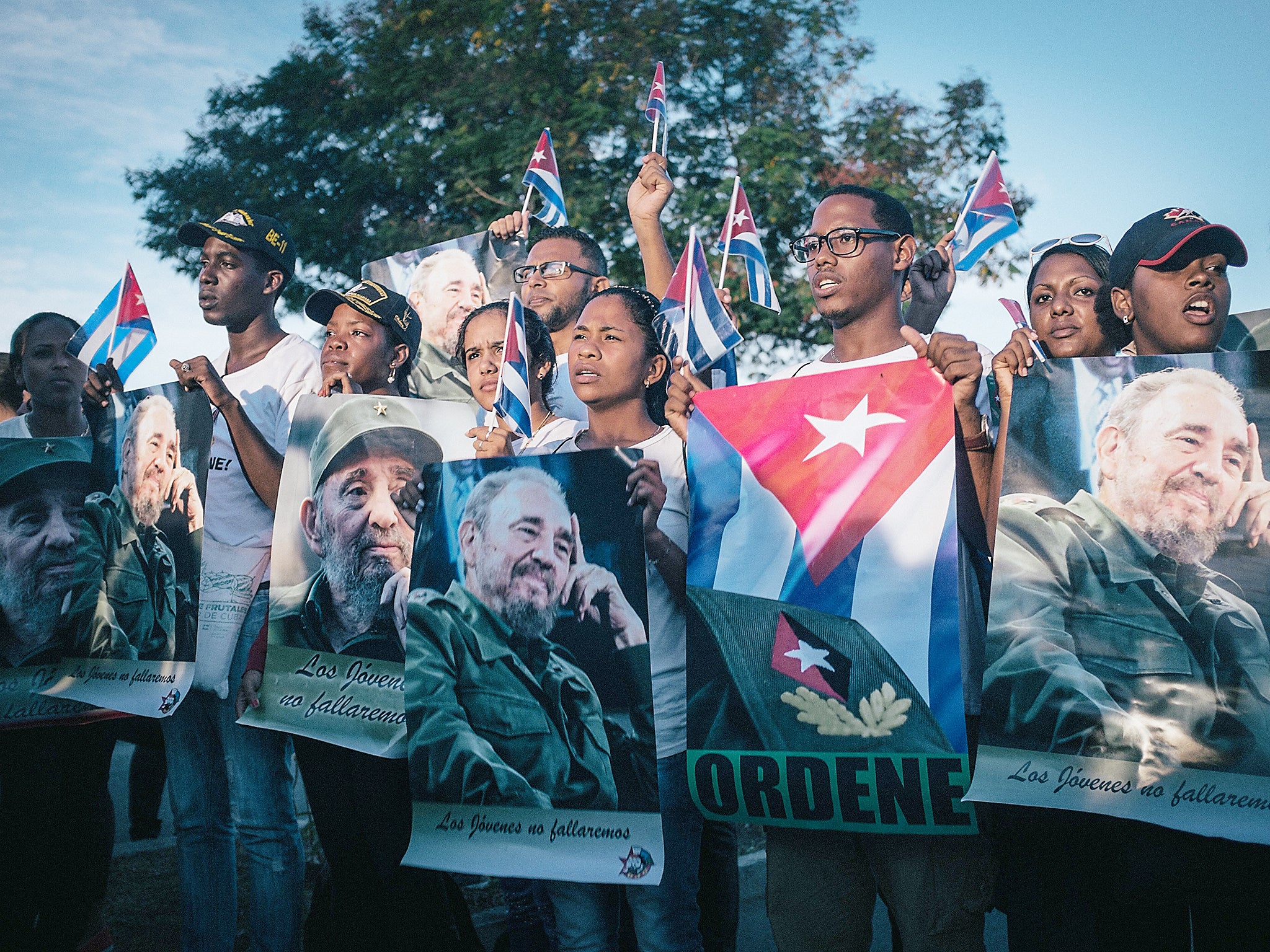
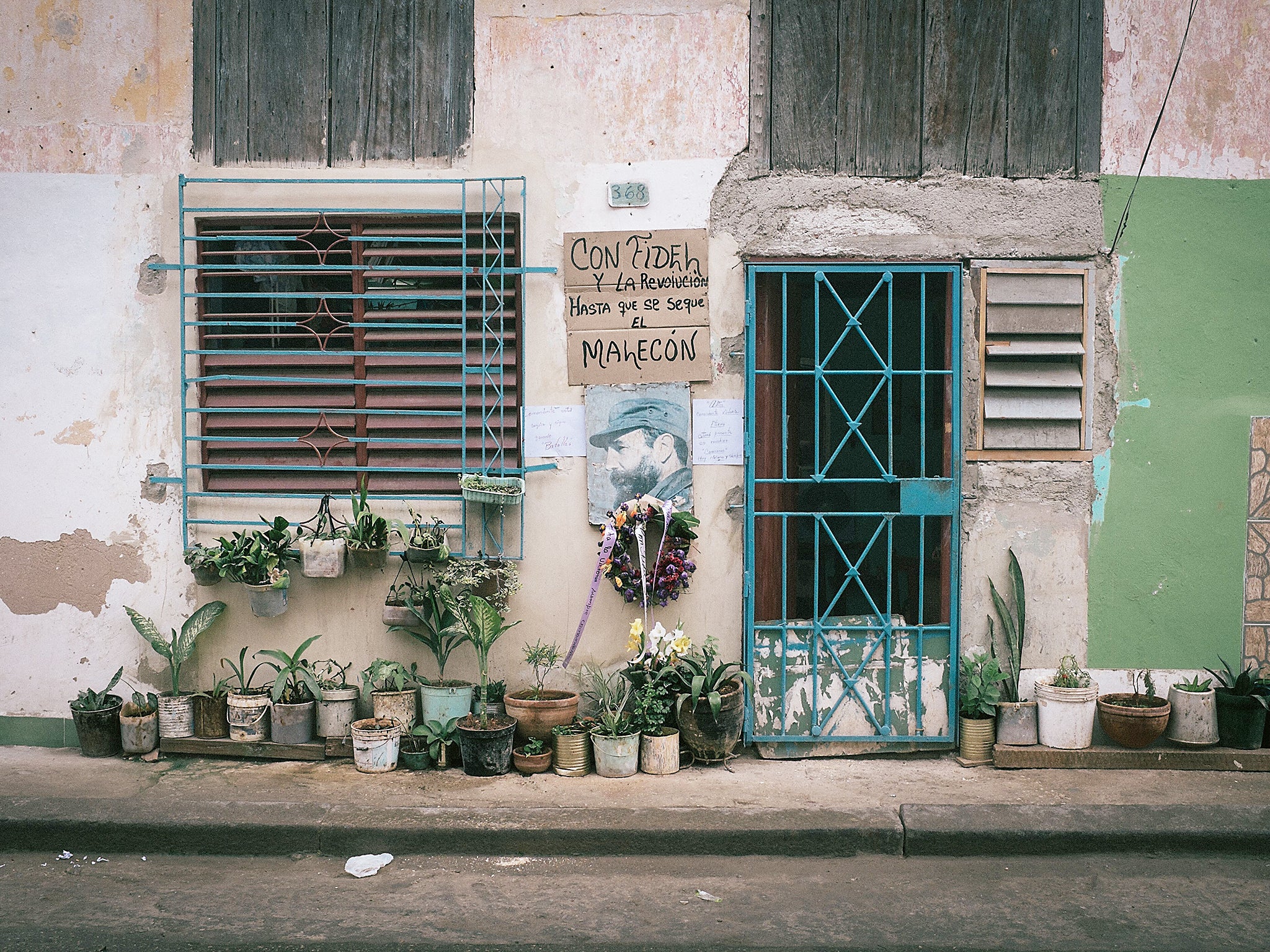

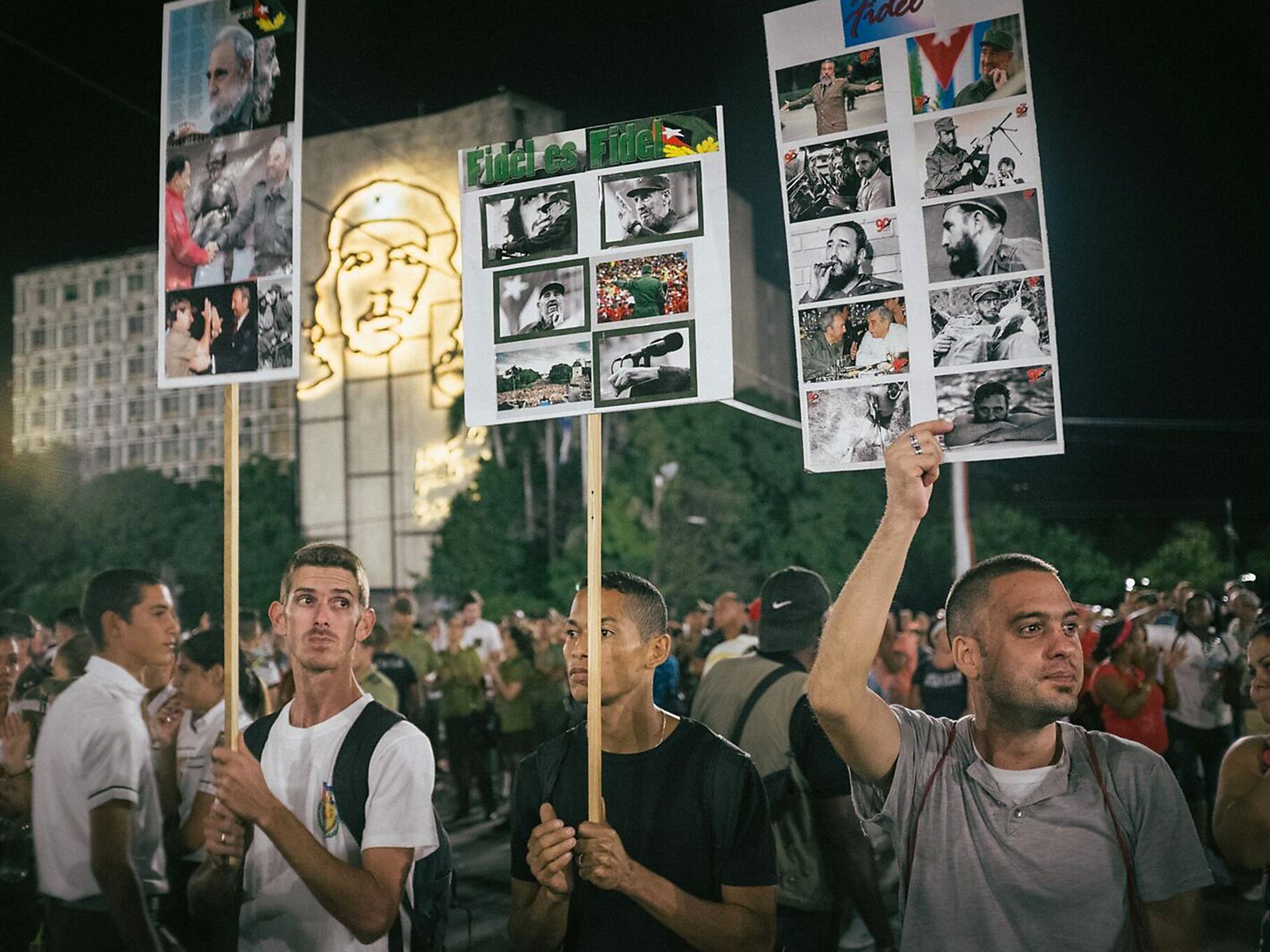
More than half a century later, it’s not uncommon to see photographs of the two revered Cuban heroes in both public spaces and in the homes of Cubans across the country. But while Korda’s iconic photograph froze Che at 31-years-old in the revolution’s fervent early years, Castro held the world’s attention for five decades.
In years to come, it will be interesting to see how Castro is remembered by the Cuban people and the state, especially if the planned law preventing permanent tributes is enacted by the Cuban parliament.
In Havana, one of the world’s most photographed cities, visiting photographers have turned their cameras away from crumbling buildings and classic American cars in order to capture the Cuban people themselves and the photographs of Castro in their hands. They posed in front of foreign visitors and talked to them about the former revolutionary leader’s impact on their lives.
The Cubans I photographed referred to Castro as “un mito” (a legend), “un mago” (a wizard) or “mi padre” (my father). Some painted their faces with the slogan: “Yo soy Fidel.” He is immortalised not only in the photographs they carried, but also in those taken of him over the course of his lifetime.
From childhood images of the late former leader to those picturing him in his eighties, Castro’s magnetic image and likeness appeared everywhere – on billboards and in newspapers, in makeshift shrines, shop displays and car windows, on homemade banners, placards and posters.
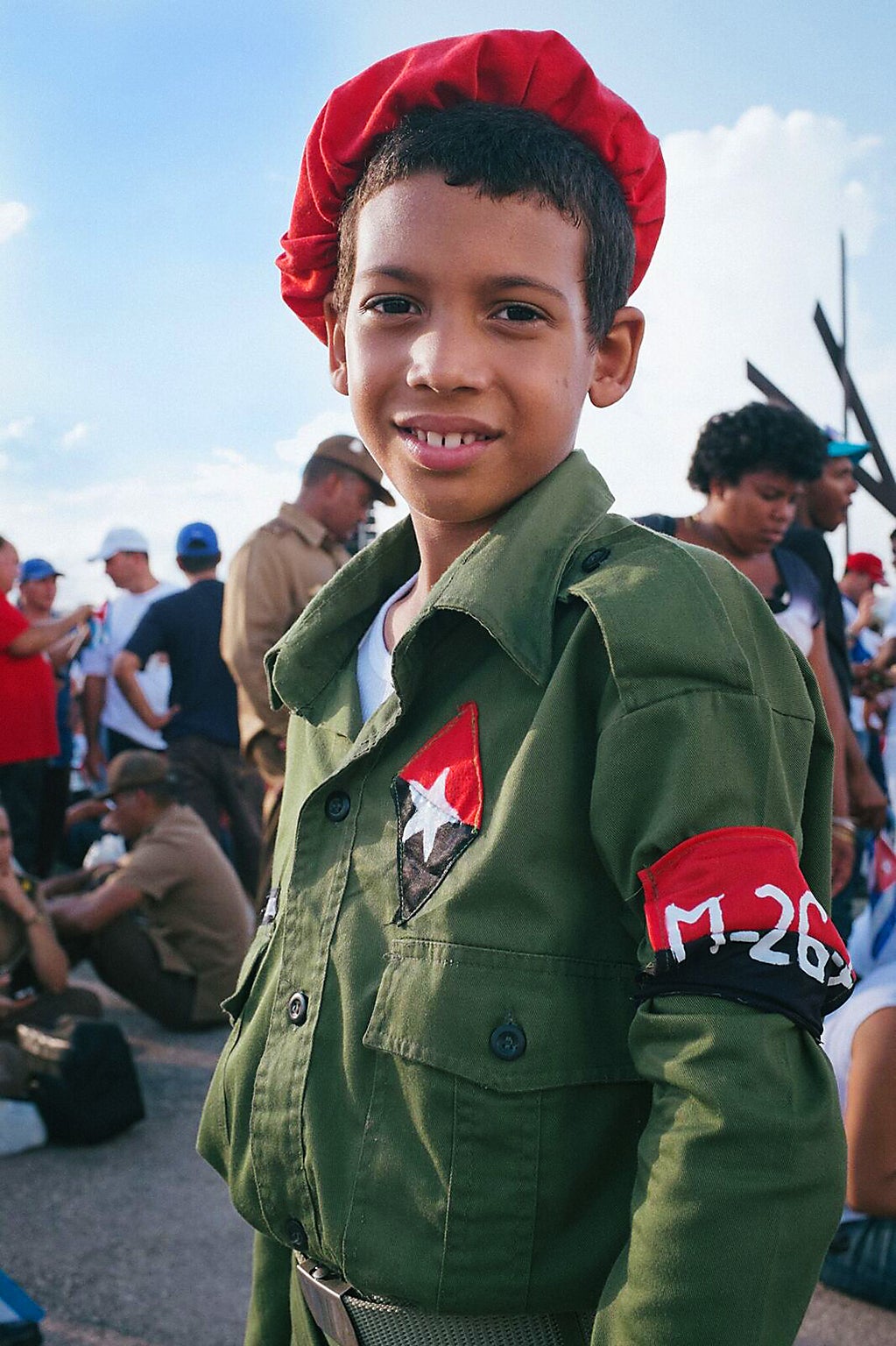

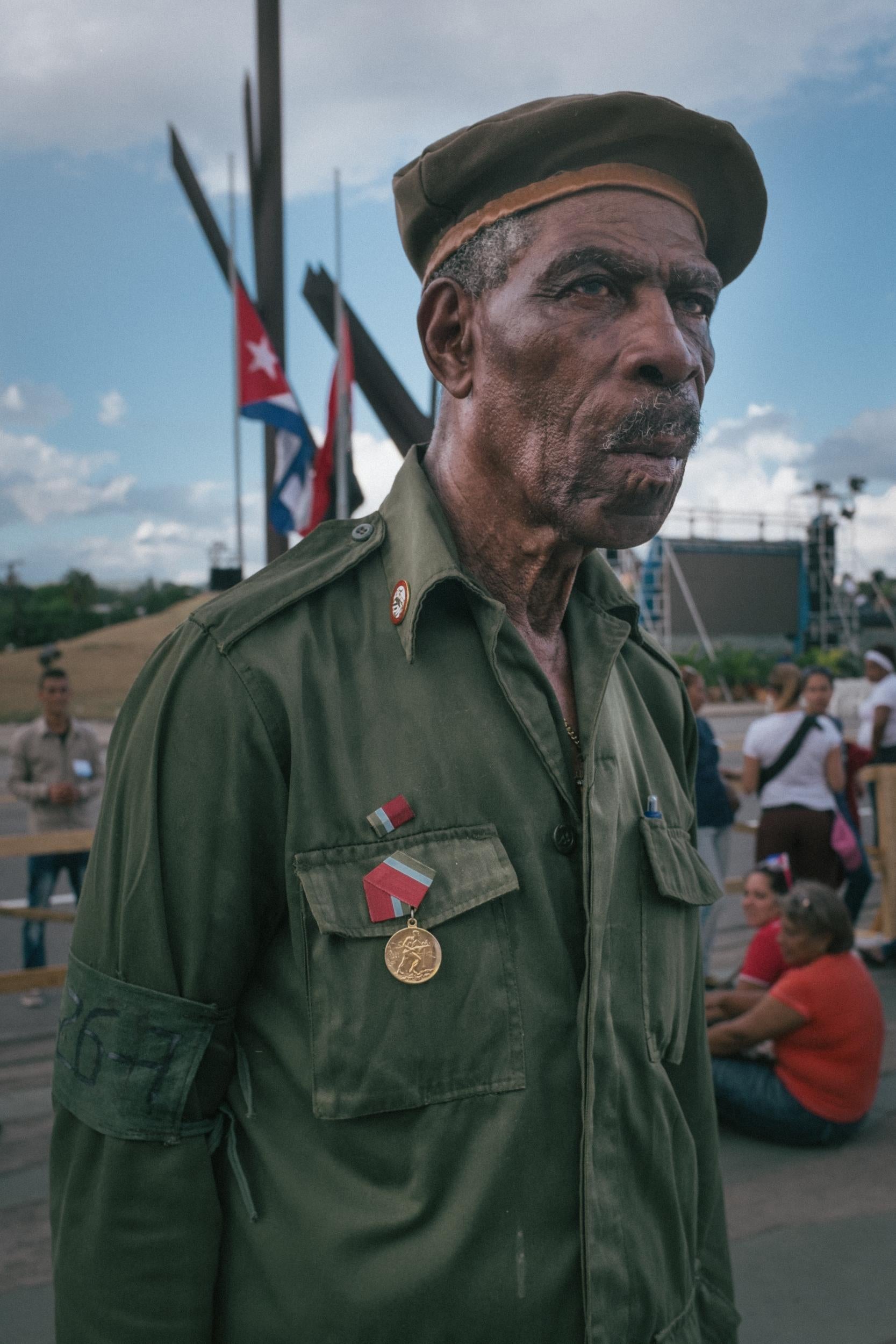
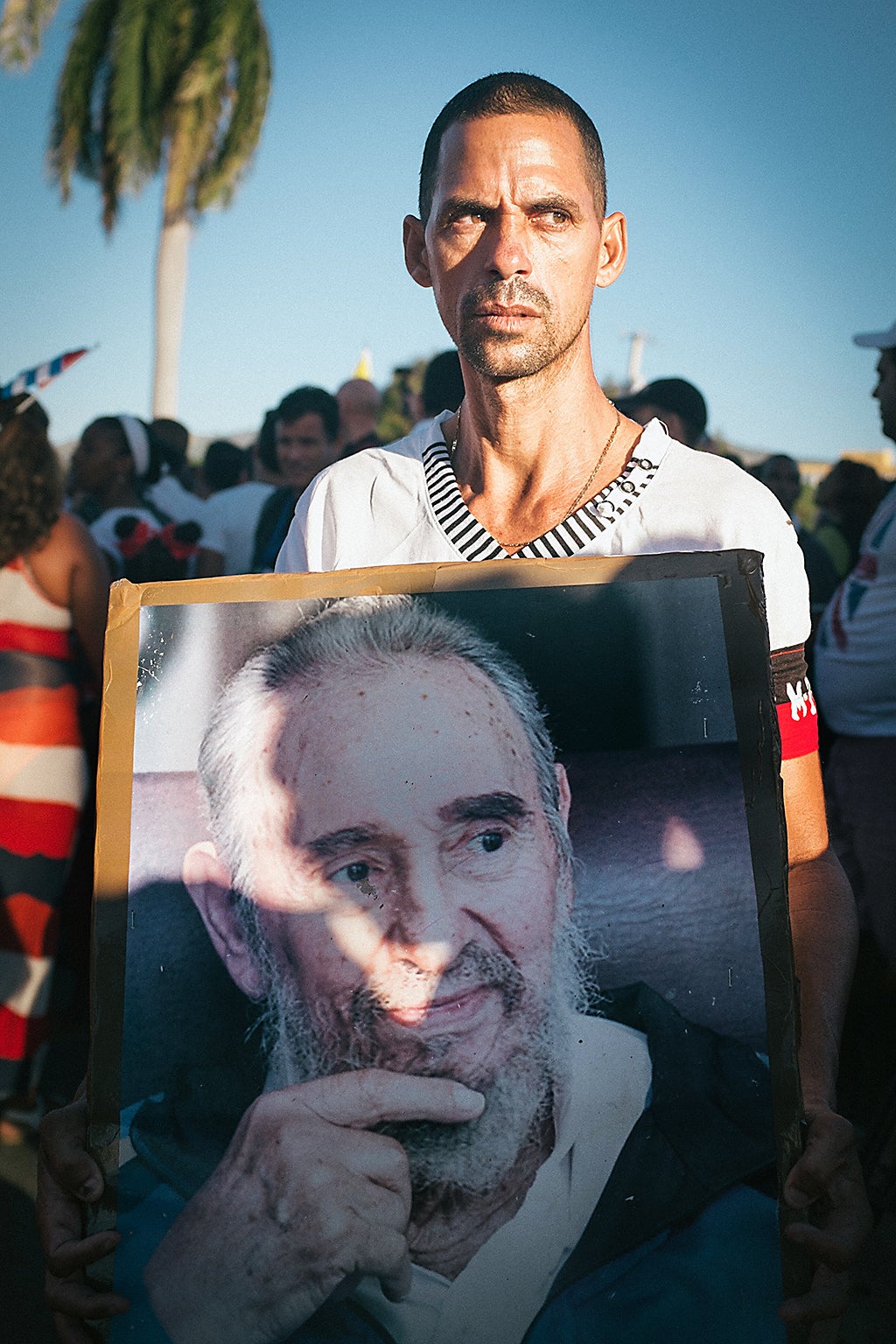
They included pre-1959 images, iconic visual representations from the time of the revolution and heroic photos from the 1960s, but also more statesmanlike photographs that presented him as a father figure, often posing with the late Venezuelan leader Hugo Chávez in the 1990s and 2000s.
Generations of “Fidelistas” in Cuba’s second largest city took pride in what felt like his homecoming to Oriente, receiving the former revolutionary leader’s ashes with a hero’s welcome upon their arrival in Santiago de Cuba. Many of them wore olive-green military uniforms and M-26-7 “brazaletes” as a tribute to Castro and the failed attack he led on the Moncada Barracks on 26 July 1953.
If Castro’s dying wish really was that no cult of personality emerge, it was in vain. A true “culto” gripped the island as soon as he died – one that’s arguably been more than 50 years in the making
This article first appeared on The Conversation (theconversation.com). James Kent is a lecturer in Hispanic studies, at Royal Holloway, University of London
Join our commenting forum
Join thought-provoking conversations, follow other Independent readers and see their replies
Comments